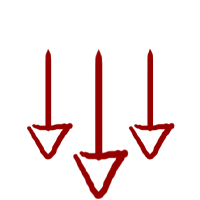Download Advanced Geotechnical Analyses By P.K.Benerjee and R.Butterfield – Geotechnical engineers have to deal with complex geometrical configurations as well as enormously difficult materials which exhibit, strongly, a path-dependent mechanical behavior. In addition, geological deposits display extensive inhomogeneities which are often difficult to define quantitatively. As a result most geotechnical engineering design problems require significant use of the engineer’s imagination, creativity, judgment, common sense and experience. To many geotechnical engineers therefore the role of any advanced analysis, particularly advanced computer based analyses, remains undefined. The editors have therefore invited some outstanding engineers who are engaged not only in developing advanced level geotechnical analyses, but are also in consulting practice to write various chapters of this book. These chapters show that a careful blend of engineering judgment and advanced principles of engineering mechanics may be used to resolve many complex geotechnical engineering problems. It is hoped that these may inspire geotechnical engineering practice to make more extensive use of them in the future.
Because of the difficulties associated with complex geometries and material behavior it is not surprising that the advanced analyses described in this book make extensive use of modern digital computers. Simplified hand calculations, although they have the attraction of being very good teaching tools, are rarely able to quantitatively reproduce the complete physical characteristics of the problem.
Chapter 1 deals with the complex interactions between fluid and solid skeletons for both static and dynamic loading. The governing equations for the solid and fluid constituents have been set out in a general manner and a nonlinear transient finite element formulation for the problem developed. A centrifuge model test of a dike is then simulated by the analysis, and the success of the developed analysis was demonstrated by the ability of the analytical model to reproduce the physical observations in the centrifuge model. Because the method of construction used has often significant influence on the mechanical behavior of geotechnical engineering structures, the next three chapters describe modifications to the finite element formulation to take account of construction induced events. Chapter 2 investigates the effects of compaction-induced stresses on the behavior of retaining walls and buried flexible culverts. Chapter 3 describes the use of an anisotropic soil model in the simulation of excavations. Such unloading problems in saturated clay, which result in a transient safety factor diminishing with time, can create dangers on many construction sites. Chapter 4 shows the finite element analysis of either cantilever, propped or anchored retaining walls in which effects of construction methods (excavated or backfilled) are considered. The chapter concludes with the application of the analysis to a complex embedded retaining wall. The development and the use of the finite element method in analysing a number of penetration problems involving sampling tubes and piles are described in Chapter 5. Such analyses can not only provide quantitative information on the changes in soil state caused by the penetration but also enable one to extract characteristic soil parameters from the simulation of actual field tests such as cone penetration and pressure-meter tests.
A simplified analysis of the dynamic pile driving problem by a combination of onedimensional wave equations for the pile with an approximate plan-wave propagation model for the soil has been considered in Chapter 6. Such analyses which include soil inertia effects represent a considerable improvement on conventional analysis of pile driving problems. In many situations the soil properties do not vary in one or two spatial directions and it is then possible to use the finite layer approach described in Chapter 7. By using an analytical representation of the field in the horizontal direction, such semianalytical methods became very efficient. The final two chapters describe both the development and use of explicit finite difference methods for analysing a wide range of geotechnical engineering problems involving both continuous as well as discontinuous jointed media. Such distinct element methods may prove to have much wider applications in the future. The editors hope that these demonstrations of advanced analysis applied to geotechnical engineering problems might encourage engineers to consider incorporating them in their strategies. Perhaps equally important, such analyses might enable them to extrapolate more effectively experience gained from one geotechnical site to another.
Advanced Geotechnical Analyses By P.K.Benerjee and R.Butterfield – PDF Free Download
Contents
![]() (Share & Gain Knowledge) Join EasyEngineering Whatsapp/Telegram Group
(Share & Gain Knowledge) Join EasyEngineering Whatsapp/Telegram Group
...Sharing is Caring...

Suggestion to Viewers: If you’re little serious about your studies, you should never consider eBooks/Books in PDF. The reason is the electronic devices divert your attention and also cause strains while reading eBooks. Kindly, Switch to hard copy of this Book & Buy it officially from the publishers and utilize your potential efficiently and with more confident.
 Book Contents
Book Contents
- Computational Approaches to the Dynamics and Statics of Saturated and Unsaturated Soils
- Finite Element Analysis of Compaction Problems
- Finite Element Analysis of the Stability of a Vertical Cut Using an
- Anisotropic Soil Model
- Finite Deformation Analysis of Soil Penetration Problems
- Analysis of the Dynamics of Pile Driving
- Finite Layer Methods in Geotechnical Analysis
- The Explicit Finite Difference Technique Applied to Geomechanics.Part I : Continua
- The Explicit Finite Difference Technique Applied to Geomechanics. Part II: Discontinua—The Distinct Element Method
 Download Link
Download Link 
Visitor Kindly Note : This website is created solely for the engineering students and graduates to download an engineering e-books, Competitive Study Notes & other Study materials for free of cost. EasyEngineering team try to Helping the students and others who cannot afford buying books is our aim. If You think this Study Material/Book is Useful, Please Get It Legally from the publishers & If you feel good Share this Website with Others.
Disclaimer : EasyEngineering does not own this book/materials, neither created nor scanned. we provide the links which is already available on the internet. For any quarries, Disclaimer are requested to kindly contact us, We assured you we will do our best. We DO NOT SUPPORT PIRACY, this copy was provided for students who are financially troubled but deserving to learn. Thank you
Link is Successfully Activated to save the Book/Material (PDF)
Kindly Note : For Security purpose (Spam Protections), You need to Verify the below Captcha to Active your Download Link.
Click below the link “DOWNLOAD” to save the Book/Material (PDF)
 DOWNLOAD – Advanced Geotechnical Analyses By P.K.Benerjee and R.Butterfield – Free Download PDF
DOWNLOAD – Advanced Geotechnical Analyses By P.K.Benerjee and R.Butterfield – Free Download PDF
If you face above Download Link error try this Link
 DOWNLOAD – Advanced Geotechnical Analyses By P.K.Benerjee and R.Butterfield – Free Download PDF
DOWNLOAD – Advanced Geotechnical Analyses By P.K.Benerjee and R.Butterfield – Free Download PDF
IS THIS MATERIAL IS HELPFUL, KINDLY SHARE IT & RATE IT
 Preview
Preview 
We need Your Support, Kindly Share this Web Page with Other Friends
If you have any Engg study materials with you kindly share it, It will be useful to other friends & We Will Publish The Book Submitted By You Immediately Including The Book Credits (Your Name) Soon After We Receive It (If The Book Is Not Posted Already By Us)
Submit Your Books/Study Materials
If You Think This Materials Is Useful, Please get it legally from the PUBLISHERS.
A GOOD MATERIAL ALONG WITH WELL EXPLAINED TEXTBOOKS PLAYS A KEY ROLE IN FETCHING APPRECIABLE GOOD RANK.
WISHING EVERY PERSON WHO GETS THIS MATERIAL FROM OUR SITE ALL THE VERY BEST !!
DISCLAIMER : I am not the original publisher of this Book/Material on net. This e-book/Material has been collected from other sources of net.
- Click Here To Download Other Subjects Civil Engineering Textbooks Huge Collection
- Click Here To Download Civil Engineering Gate Study Materials
- Click Here To Download Semester wise Civil Engineering Study Material
- Click Here To Download other Departments Study Materials
Thank you for visiting my thread. Hope this post is helpful to you. Have a great day !
Kindly share this post with your friends to make this exclusive release more useful.

![[PDF] Higher Engineering Mathematics By B.S. Grewal Book Free Download Higher Engineering Mathematics By B.S. Grewal - Free Download PDF](https://i0.wp.com/easyengineering.net/wp-content/uploads/2017/10/higher-engineering-mathematics-by-bs-grewal.jpg?resize=100%2C70&ssl=1)
![[PDF] Mechanics of Materials By B.C. Punmia, Ashok Kumar Jain, Arun Kumar Jain Book Free Download](https://i0.wp.com/easyengineering.net/wp-content/uploads/2018/08/51LrTNsm-GL.jpg?resize=100%2C70&ssl=1)

![[PDF] Soil Mechanics and Foundations By B.C. Punmia, Ashok Kumar Jain, Arun Kumar Jain Book Free Download](https://i0.wp.com/easyengineering.net/wp-content/uploads/2018/09/51yWDhYnppL.jpg?resize=100%2C70&ssl=1)
![[PDF] ME8793 Process Planning and Cost Estimation (PPCE) Books, Lecture Notes, 2marks with answers, Important Part B 13marks Questions, Question Bank & Syllabus ME8793 Process Planning and Cost Estimation (PPCE)](https://i0.wp.com/easyengineering.net/wp-content/uploads/2023/08/ME8793-Process-Planning-and-Cost-Estimation-PPCE.jpg?resize=100%2C70&ssl=1)
![[PDF] ME8792 Power Plant Engineering (PPE) Books, Lecture Notes, 2marks with answers, Important Part B 13marks Questions, Question Bank & Syllabus ME8792 Power Plant Engineering (PPE)](https://i0.wp.com/easyengineering.net/wp-content/uploads/2023/08/ME8792-Power-Plant-Engineering-PPE.jpg?resize=100%2C70&ssl=1)
![[PDF] ME8791 Mechatronics Books, Lecture Notes, 2marks with answers, Important Part B 13marks Questions, Question Bank & Syllabus ME8791 Mechatronics](https://i0.wp.com/easyengineering.net/wp-content/uploads/2023/08/ME8791-Mechatronics.jpg?resize=100%2C70&ssl=1)
![[PDF] Civil Engineering Books Huge Collections (Subject wise) Free Download Civil Engineering Books (Subject wise) Huge Collections – PDF Free Download](https://i0.wp.com/easyengineering.net/wp-content/uploads/2017/06/PicsArt_11-10-07.12.16.png?resize=100%2C70&ssl=1)
![[PDF] Civil Chemical Mechanical Electrical and Electronics & Communication Engineering Objective Books Collection For Engineering Free Download Objective Type Questions Books Collection – PDF Free Download](https://i0.wp.com/easyengineering.net/wp-content/uploads/2017/11/PicsArt_11-04-09.06.28.png?resize=100%2C70&ssl=1)
![[PDF] Estimation and Costing By B.N. Dutta Free Downlaod Estimation and Costing By B.N. Dutta](https://i0.wp.com/easyengineering.net/wp-content/uploads/2017/08/Estimation-and-Quantity-Surveying-Local-Author-Book.jpg?resize=100%2C70&ssl=1)
![[PDF] Quantity Aptitude & Reasoning Books Collection For Engineering Free Download Quantity Aptitude Books Collection – PDF Free Download](https://i0.wp.com/easyengineering.net/wp-content/uploads/2017/11/PicsArt_11-04-09.04.12.png?resize=100%2C70&ssl=1)
![[PDF] Material Science Handwritten Study Materials (Notes) For GATE IES PSUs & Other National & State level GOVT Exams Free Download Material Science Handwritten IES GATE PSU's TANCET & GOVT Exams Study Material For Electrical Engineering & Electronics Communication Engineering – PDF Free Download](https://i0.wp.com/easyengineering.net/wp-content/uploads/2017/11/PicsArt_11-24-03.07.14.png?resize=100%2C70&ssl=1)
![[PDF] Optical Networks: A Practical Perspective By Rajiv Ramaswami, Kumar Sivarajan, Galen Sasaki Book Free Download Optical Networks: A Practical Perspective By Rajiv Ramaswami, Kumar Sivarajan, Galen Sasaki](https://i0.wp.com/easyengineering.net/wp-content/uploads/2018/03/4179u0o41eL.jpg?resize=100%2C70&ssl=1)
![[PDF] Strength Of Materials Books Collection Free Download Strength Of Materials Standard Books – PDF Free Download](https://i0.wp.com/easyengineering.net/wp-content/uploads/2017/10/PicsArt_11-10-02.10.11.png?resize=100%2C70&ssl=1)
![[PDF] Civil Engineering GATE Previous Years Question Papers Collections With Key (Solutions) Civil Engineering GATE Previous Years Question Papers Collections](https://i0.wp.com/easyengineering.net/wp-content/uploads/2017/12/PicsArt_12-02-02.38.21.png?resize=100%2C70&ssl=1)
![[PDF] Introduction to Basic Manufacturing Process & Workshop Technology By Rajender Singh Free Download Introduction to Basic Manufacturing Process & Workshop Technology](https://i0.wp.com/easyengineering.net/wp-content/uploads/2017/10/81RJSKZlPRL.jpg?resize=100%2C70&ssl=1)
![[PDF] EC8491 Communication Theory (CT) Books, Lecture Notes, 2 marks with answers, Important Part B 13 marks Questions, Question Bank & Syllabus](https://i0.wp.com/easyengineering.net/wp-content/uploads/2019/11/EC8491-Communication-Theory.jpg?resize=100%2C70&ssl=1)
![[PDF] Sri Krishna Institute Structural Analysis New Edition Classroom Handwritten Notes for IES IAS GATE SSC Railway TNPSC PSUs & GOVT Exams Free Download Sri Krishna Institute Structural Analysis Handwritten Classroom Notes](https://i0.wp.com/easyengineering.net/wp-content/uploads/2019/07/PicsArt_07-24-01.40.08.jpg?resize=324%2C235&ssl=1)
![[PDF] SSC Mathematics Guide By Disha Experts Book Free Download](https://i0.wp.com/easyengineering.net/wp-content/uploads/2018/02/71rlYEk7MsL.jpg?resize=324%2C235&ssl=1)

![[PDF] Circuit Analysis: Theory and Practice By Allan H. Robbins, Wilhelm C Miller Book Free Download Circuit Analysis: Theory and Practice By Allan H. Robbins](https://i0.wp.com/easyengineering.net/wp-content/uploads/2018/03/510iFvgH9KL._SX389_BO1204203200_.jpg?resize=324%2C235&ssl=1)




![[PDF] Calculus Made Easy By Silvanus P. Thompson Book Free Download](https://i0.wp.com/easyengineering.net/wp-content/uploads/2018/09/ab4a5af1430092fd55385115f6ce.jpg?resize=100%2C70&ssl=1)
